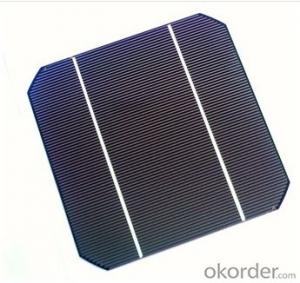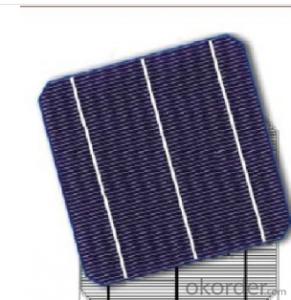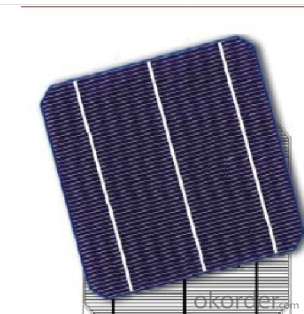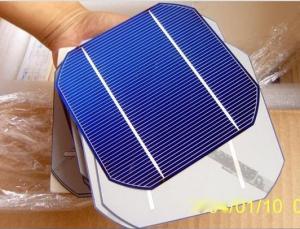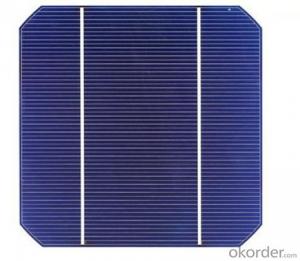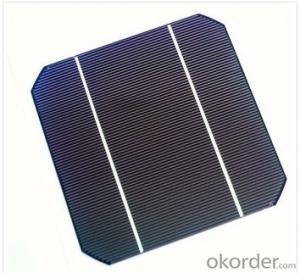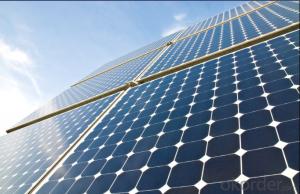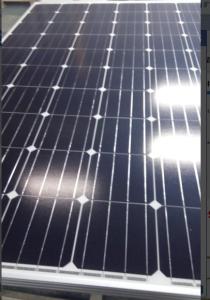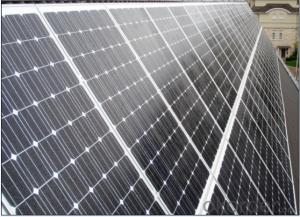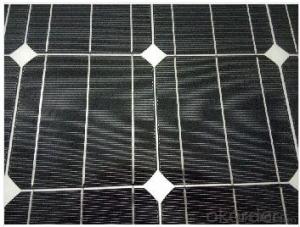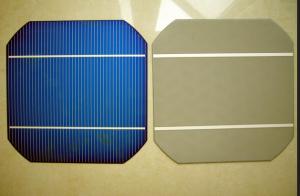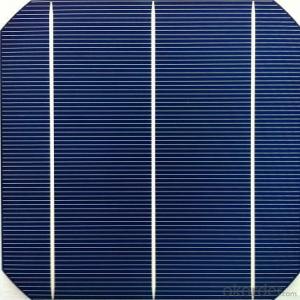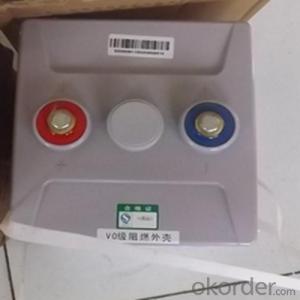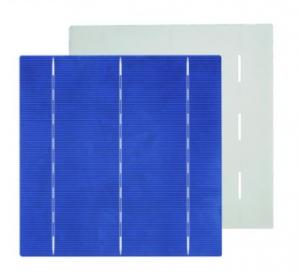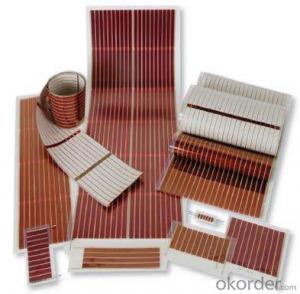Paintable Solar Cells - Mono Solar Cells with Different Efficiency CNBM Brand
- Loading Port:
- Shanghai
- Payment Terms:
- TT OR LC
- Min Order Qty:
- 1 PCS
- Supply Capability:
- 1000000 PCS/month
OKorder Service Pledge
OKorder Financial Service
You Might Also Like
Specifications of Mono Solar Cells
Format : 156 mm × 156 mm ± 0.5 mm
Thickness: 210 μm ±40 μm
Front (-) : 1.5mm bus bars (silver),blue anti-reflection coating (silicon nitride)
Back (+) : 2.5mm wide soldering pads (silver) back surface field (aluminium)
Electrical Characteristic of Mono Solar Cells
Efficiency (%) | Pmpp (W) | Umpp (V) | Impp (A) | Uoc (V) | Isc (A) | FF (%) |
18.35 | 4.384 | 0.526 | 8.333 | 0.63 | 8.877 | 78.39% |
18.20 | 4.349 | 0.526 | 8.263 | 0.63 | 8.789 | 78.54% |
18.05 | 4.313 | 0.525 | 8.216 | 0.63 | 8.741 | 78.32% |
17.90 | 4.277 | 0.524 | 8.161 | 0.629 | 8.713 | 78.04% |
17.75 | 4.241 | 0.523 | 8.116 | 0.629 | 8.678 | 77.70% |
17.60 | 4.206 | 0.521 | 8.073 | 0.628 | 8.657 | 77.36% |
17.45 | 4.170 | 0.519 | 8.039 | 0.628 | 8.633 | 76.92% |
17.30 | 4.134 | 0.517 | 8.004 | 0.626 | 8.622 | 76.59% |
17.15 | 4.098 | 0.516 | 7.938 | 0.625 | 8.537 | 76.80% |
17.00 | 4.062 | 0.512 | 7.933 | 0.625 | 8.531 | 76.18% |
16.75 | 4.002 | 0.511 | 7.828 | 0.625 | 8.499 | 75.34% |
16.50 | 3.943 | 0.510 | 7.731 | 0.625 | 8.484 | 74.36% |
Advantage of Mono Solar Cells
1. High efficiency and High power.
2. Long-term electrical stability.
3. Lowest price and Fastest delivery.
4. Good quality and best service.
5. Bulk supply
6. Trusted Warranty
7. Big Sale
8. More than 25 years on the lifetime.
Usage and Applications of Mono Solar Cells
Solar cells are often electrically connected and encapsulated as a module. Photovoltaic modules often have a sheet of glass on the front (sun up) side, allowing light to pass while protecting the semiconductor wafers from abrasion and impact due to wind-driven debris, rain, hail, etc. Solar cells are also usually connected in series in modules, creating an additive voltage. Connecting cells in parallel will yield a higher current;our solar cells have passed IEC Certification. With high quality and stable quality. Our Cells can greatly improve the performance of Solar Modules.
Packaging & Delivery of Mono Solar Cells
Carton Box Package and Deliver by air. It should be noticed that it should be avoid of water, sunshine and moist.
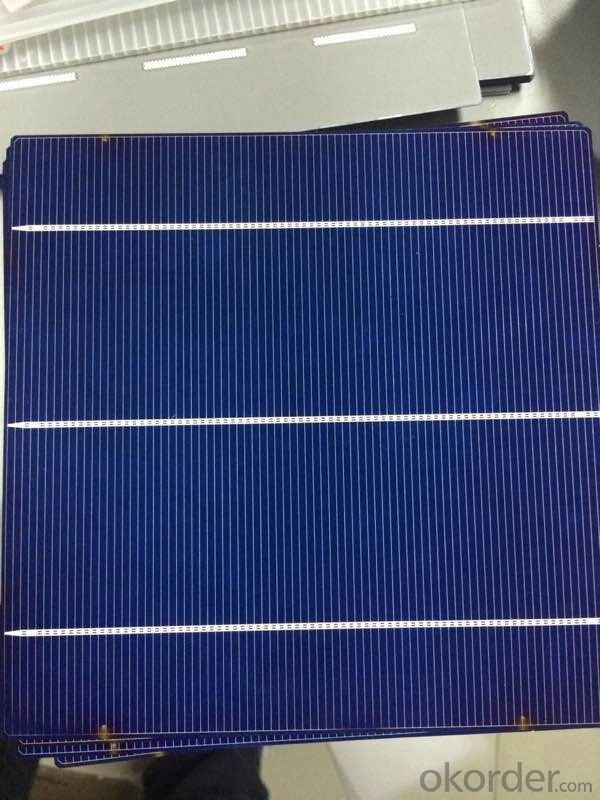
FAQ:What is your warranty system?
For c-Si panel: 25years output warranty for no less than 80% of performance, 10years output warranty for no less than 90% of performance. Free from material and workmanship defects within 5years.
For a-Si panel: 20years output warranty for no less than 80% of performance, 10years output warranty for no less than 90% of performance. Free from material and workmanship defects within 2years.
- Q: Can solar cells be used on windows?
- Yes, solar cells can be used on windows. Transparent solar panels known as "solar windows" can be installed on windows to generate electricity while still allowing light to pass through. These solar windows are a promising technology for integrating renewable energy generation into buildings.
- Q: What is the role of solar cells in powering streetlights?
- The role of solar cells in powering streetlights is to capture sunlight and convert it into electricity, which is then stored in batteries. This stored energy is used to power the streetlights during the night, reducing the dependence on the electrical grid and minimizing energy costs and environmental impact.
- Q: How do solar cells perform in areas with limited space for installation?
- Solar cells can still perform well in areas with limited space for installation, thanks to advancements in technology. Compact and efficient solar panels are designed to maximize energy production even in small areas. Additionally, innovative installation techniques such as rooftop solar panels or solar canopies can help utilize available space effectively.
- Q: What is the role of anti-islanding devices in solar cell systems?
- The role of anti-islanding devices in solar cell systems is to ensure the safety of utility workers and prevent damage to the grid in the event of a power outage. These devices are designed to detect when the grid loses power and immediately disconnect the solar system from the grid. This prevents the solar system from continuing to generate electricity and feeding it back into the grid, which could pose a danger to workers trying to fix the power outage. Anti-islanding devices also help to protect the solar system itself from potential damage caused by voltage fluctuations during an outage.
- Q: On the parallel connection of solar cells
- Whether you say more than one solar cell is in series or parallel, it depends on your use requirements to decide if the parameters of solar cells are basically the same, and you need a relatively high "use" voltage, that can The battery in series, if you need a larger operating current and the voltage does not need high, you can connect multiple solar cells in parallel to get a higher output current;
- Q: Solar panel resistance is changed with what
- To be sure that this question is very professional. Secondly, I have to answer this question: the internal resistance of solar energy, mainly reflected in the power generation, the inhibition of current. In the time of power generation,
- Q: Can solar cells be used for powering security systems?
- Yes, solar cells can definitely be used for powering security systems. Solar panels can convert sunlight into electricity, providing a renewable energy source to power security cameras, alarms, and other security devices. This eliminates the need for a constant electrical supply or batteries, making it a cost-effective and environmentally friendly solution for powering security systems.
- Q: Can solar cells be used to power electric gates?
- Yes, solar cells can be used to power electric gates. Solar cells convert sunlight into electricity, which can be stored in batteries and used to power various devices, including electric gates. This allows for a sustainable and environmentally friendly solution to power electric gates without relying on traditional energy sources.
- Q: Can solar cells be used in public transportation systems?
- Yes, solar cells can be used in public transportation systems. They can be integrated into vehicles such as buses, trams, and trains to generate electricity from sunlight, reducing reliance on conventional energy sources and lowering carbon emissions. Solar-powered public transportation systems have been successfully implemented in various cities around the world, demonstrating the feasibility and benefits of using solar cells in this sector.
- Q: How are solar cells manufactured?
- Solar cells are manufactured through a multi-step process that involves the production of silicon wafers, the creation of a p-n junction, the addition of anti-reflective coatings, and the assembly of electrical contacts.
Send your message to us
Paintable Solar Cells - Mono Solar Cells with Different Efficiency CNBM Brand
- Loading Port:
- Shanghai
- Payment Terms:
- TT OR LC
- Min Order Qty:
- 1 PCS
- Supply Capability:
- 1000000 PCS/month
OKorder Service Pledge
OKorder Financial Service
Similar products
Hot products
Hot Searches
Related keywords
